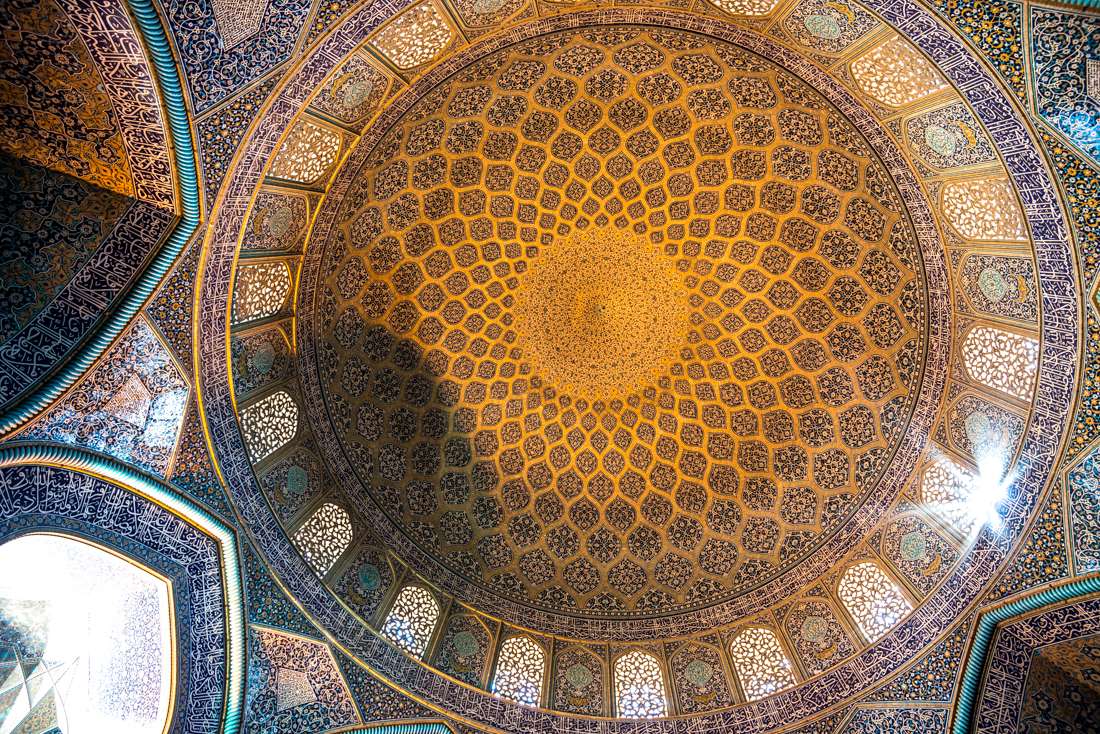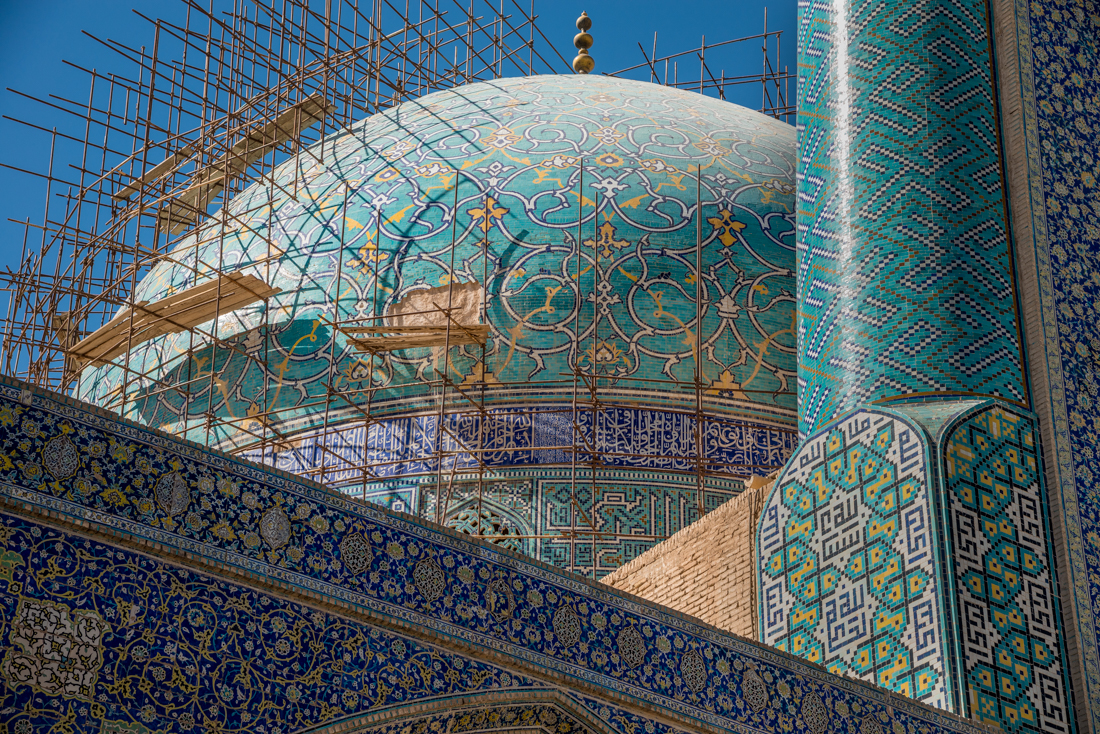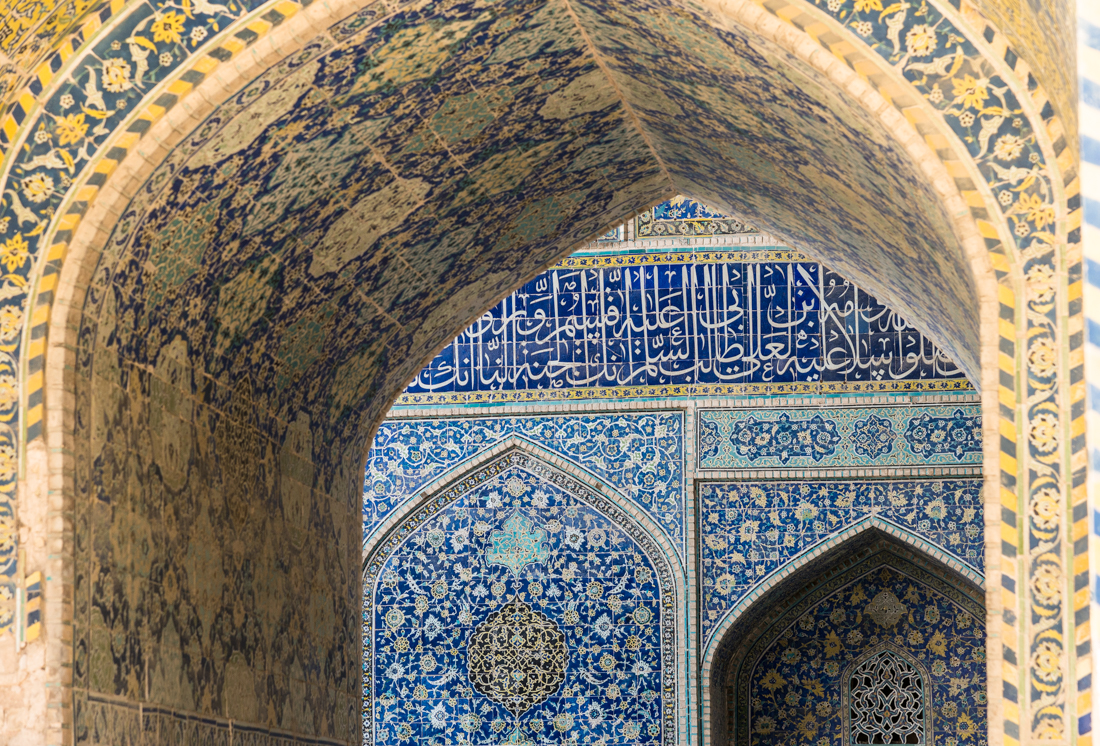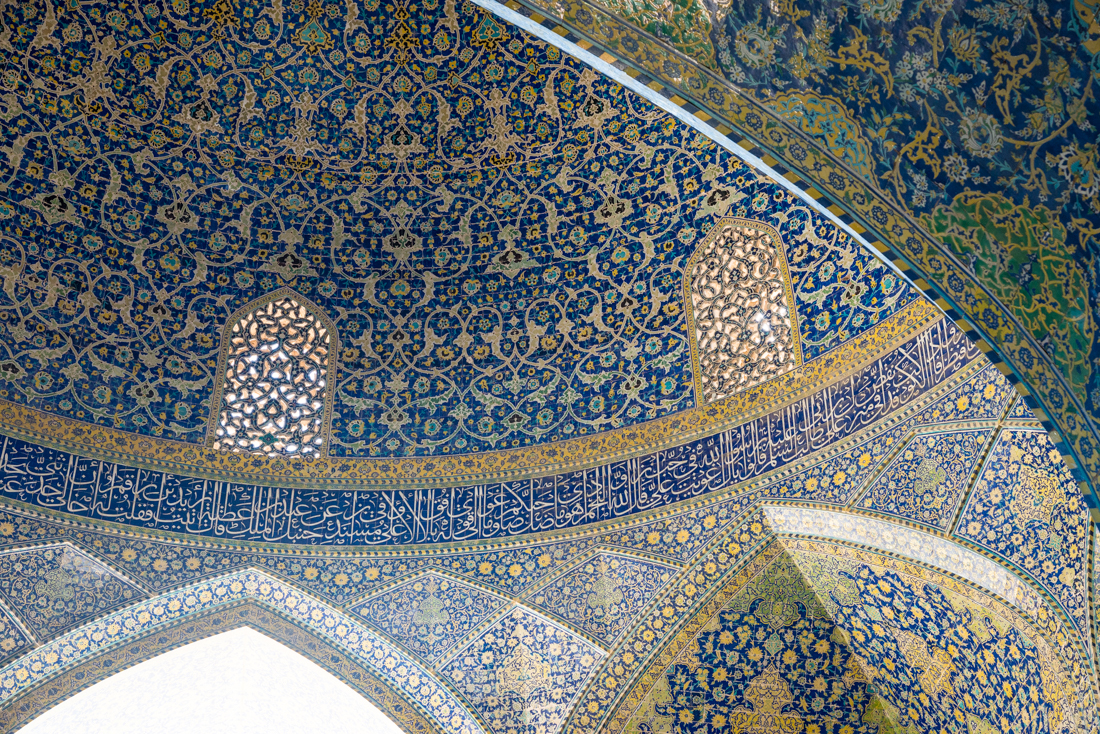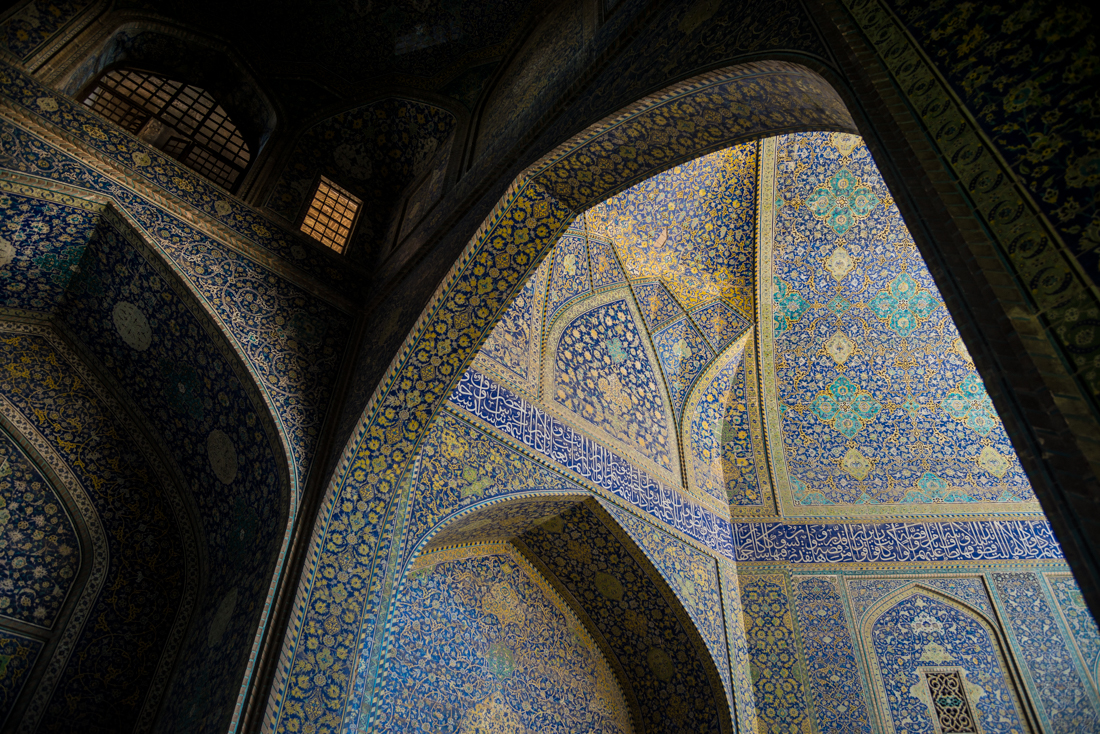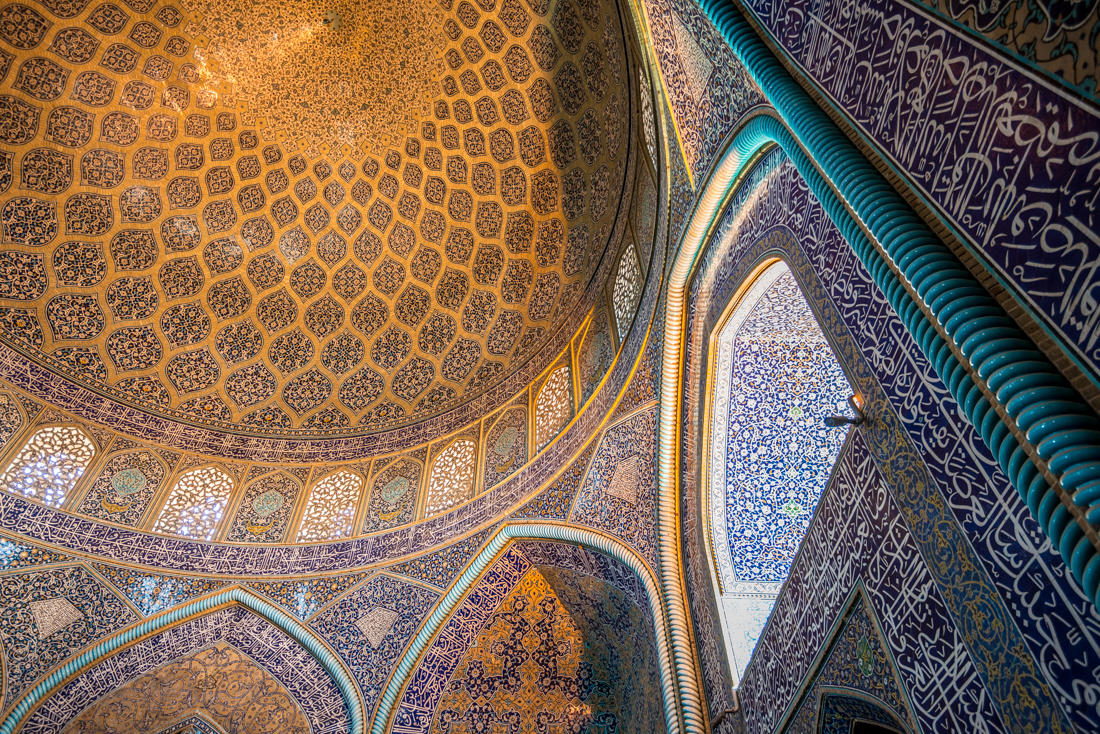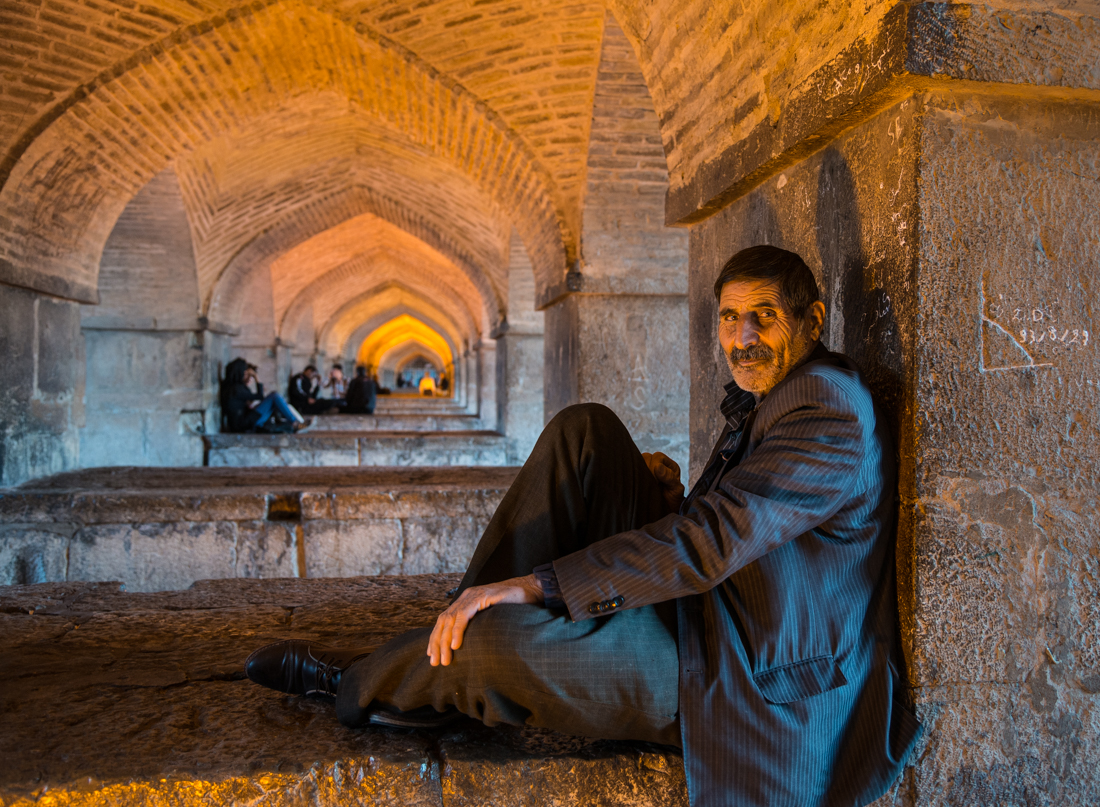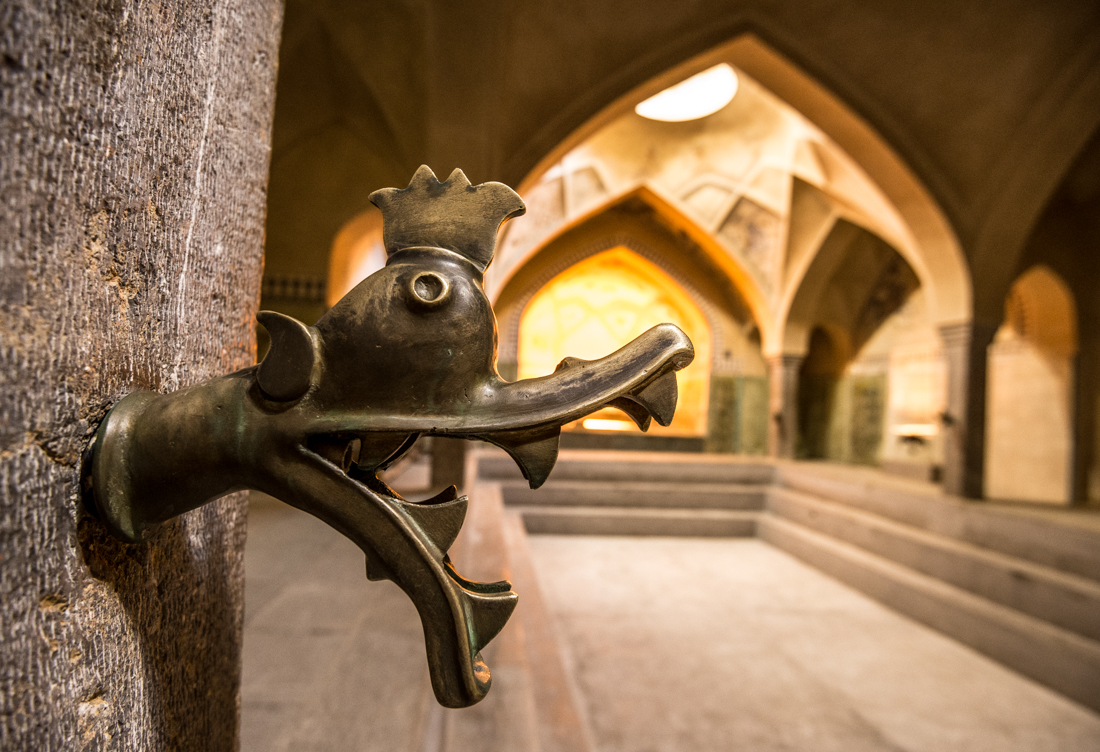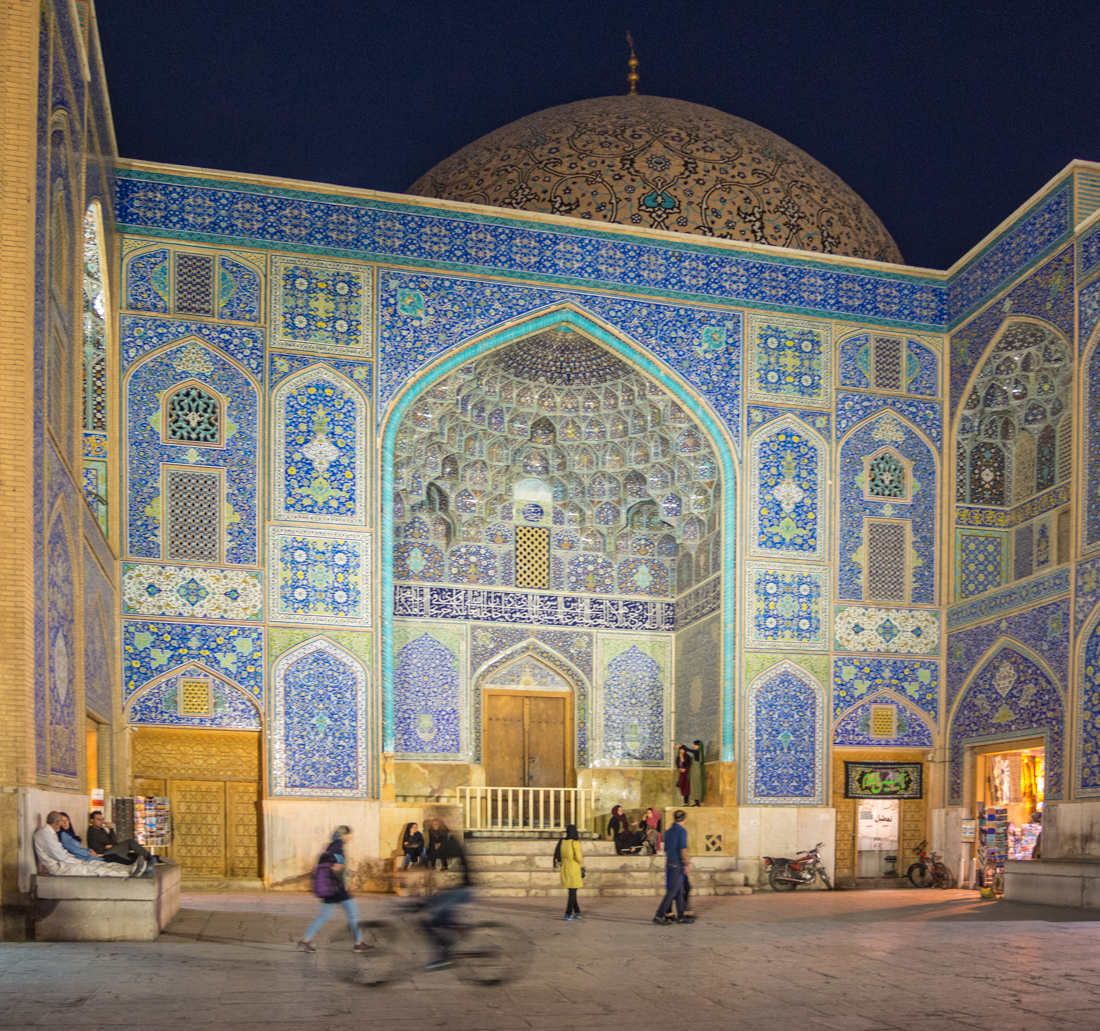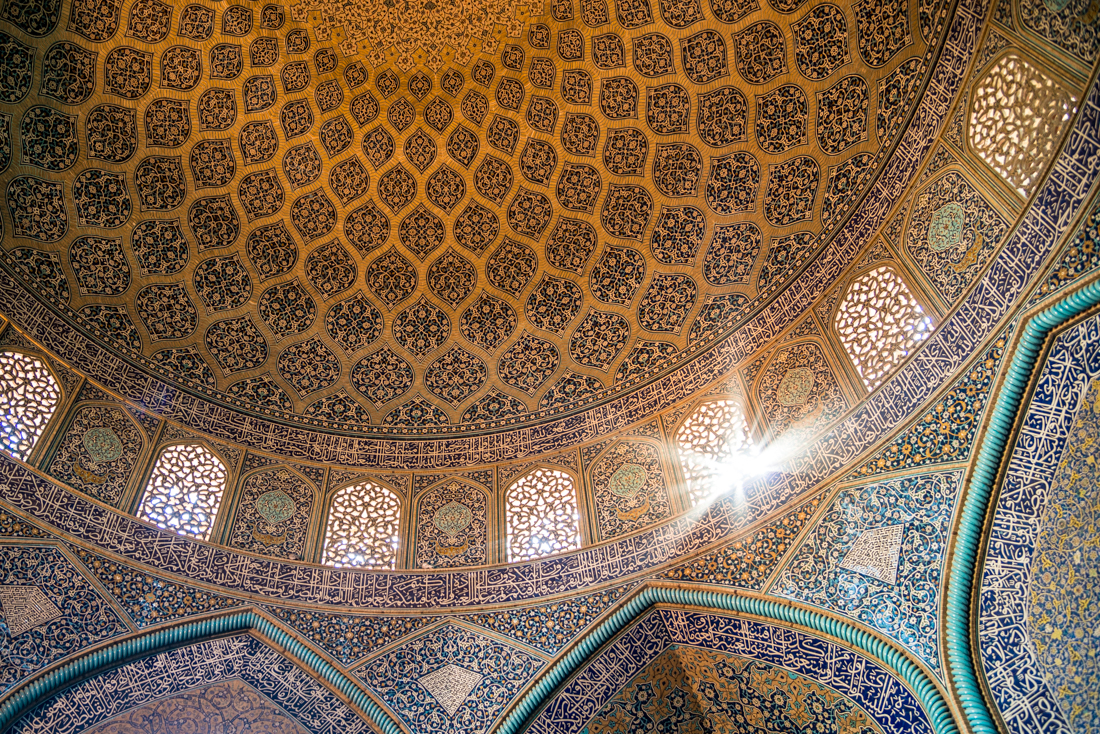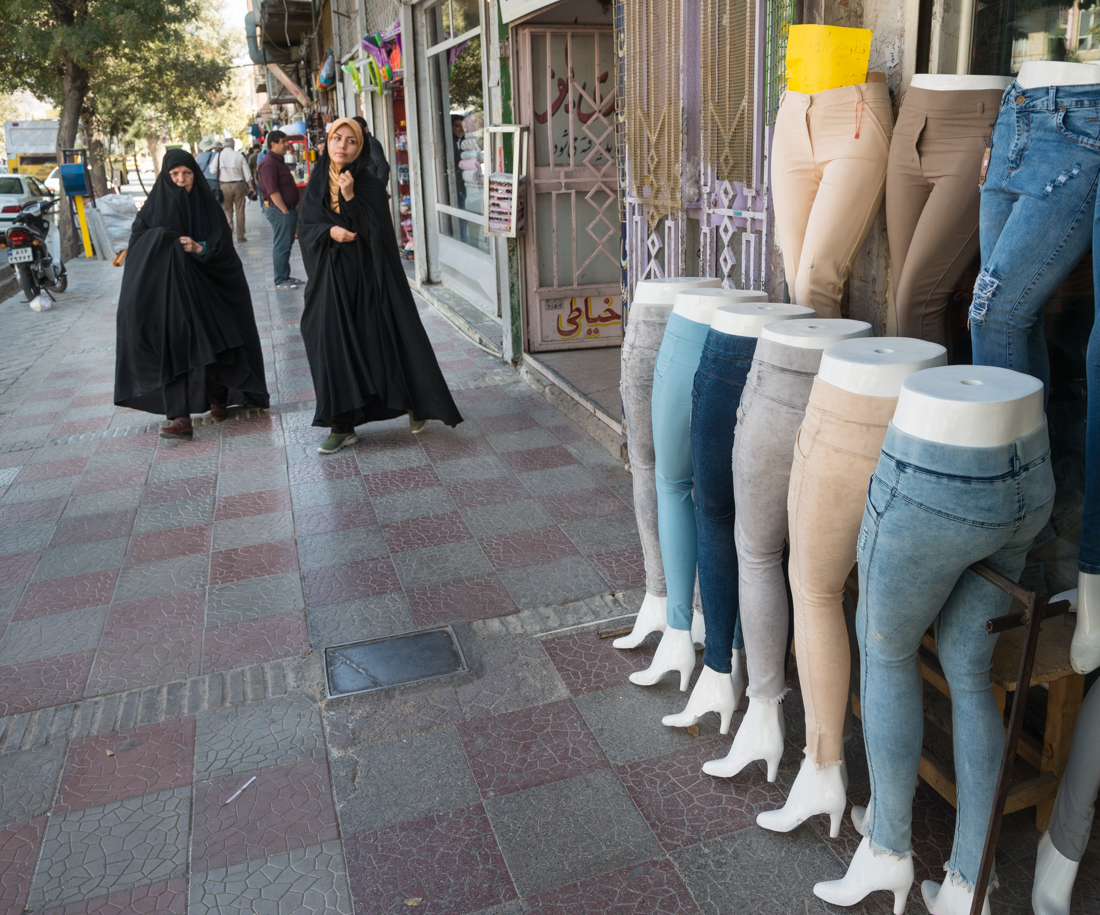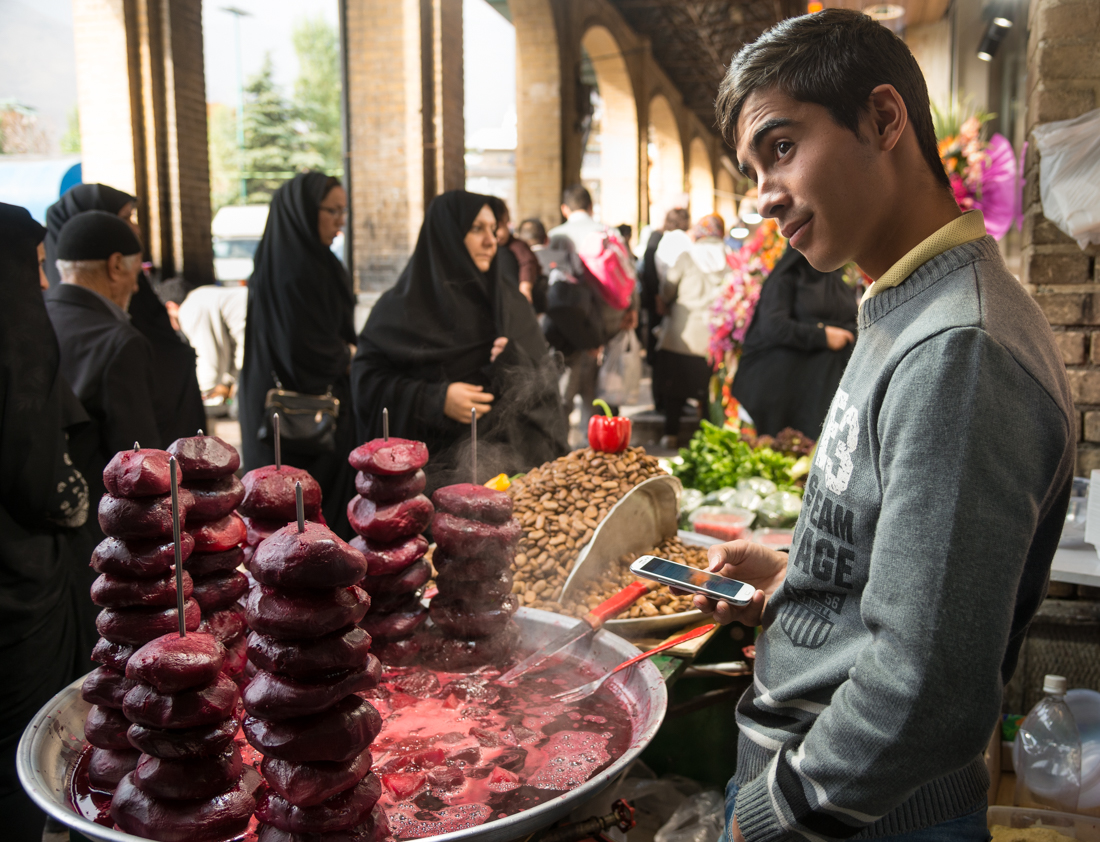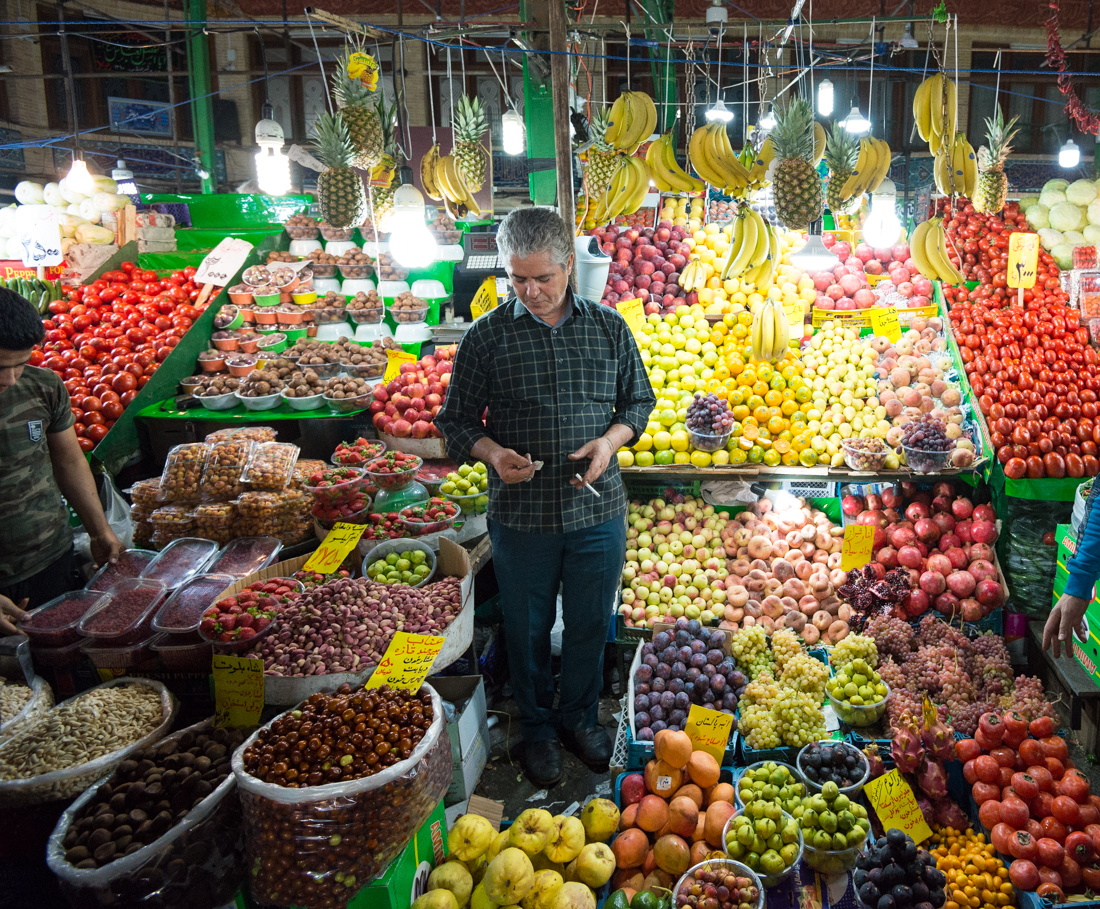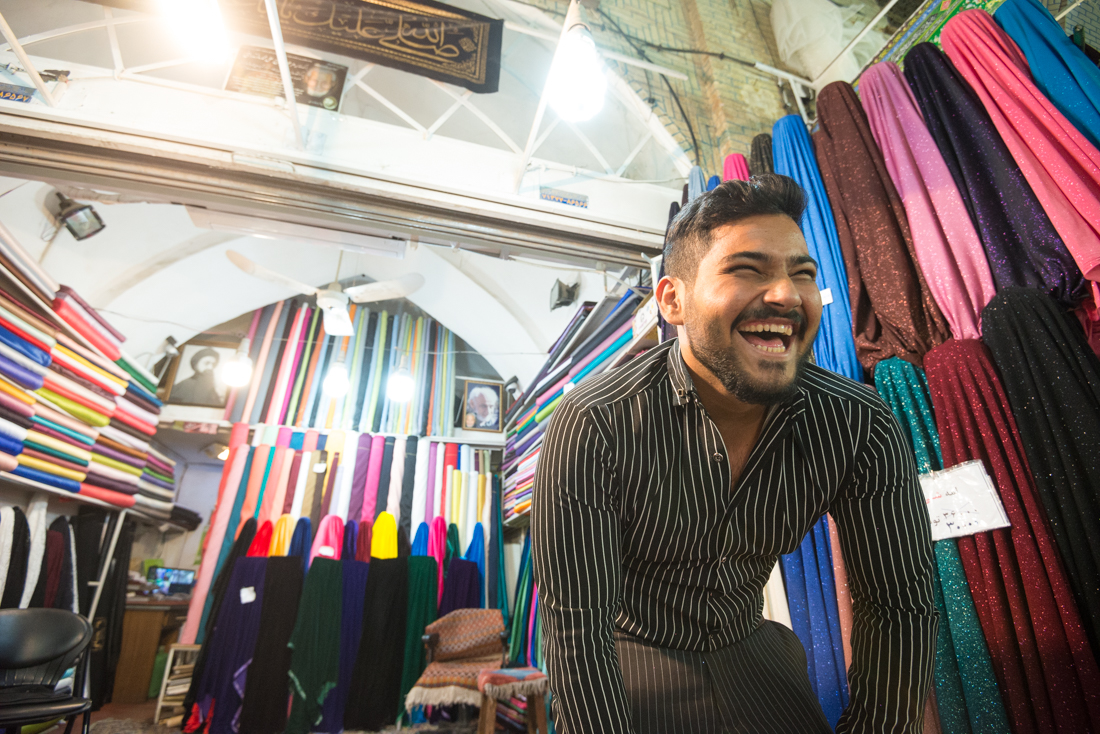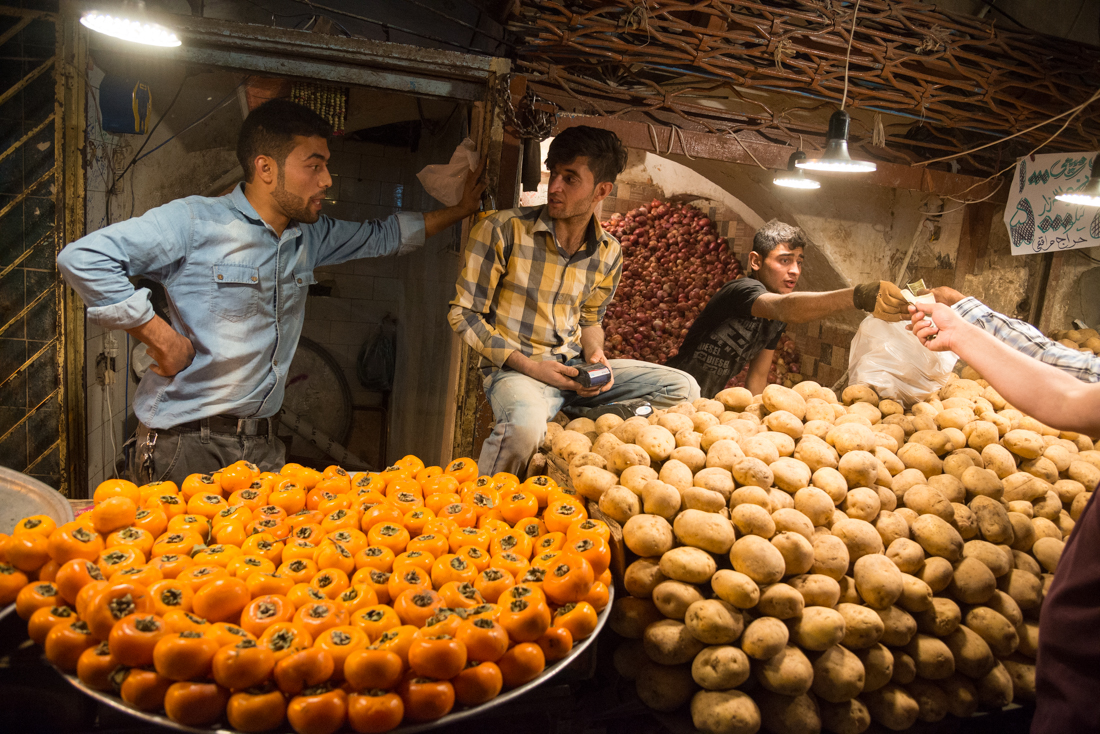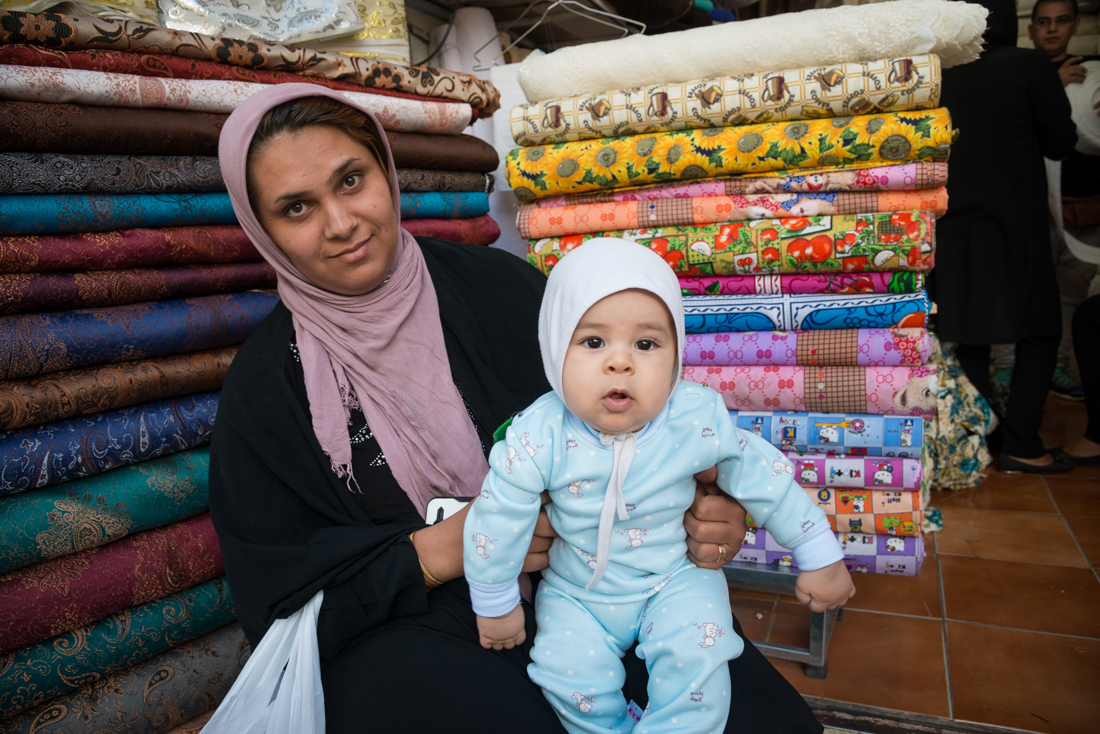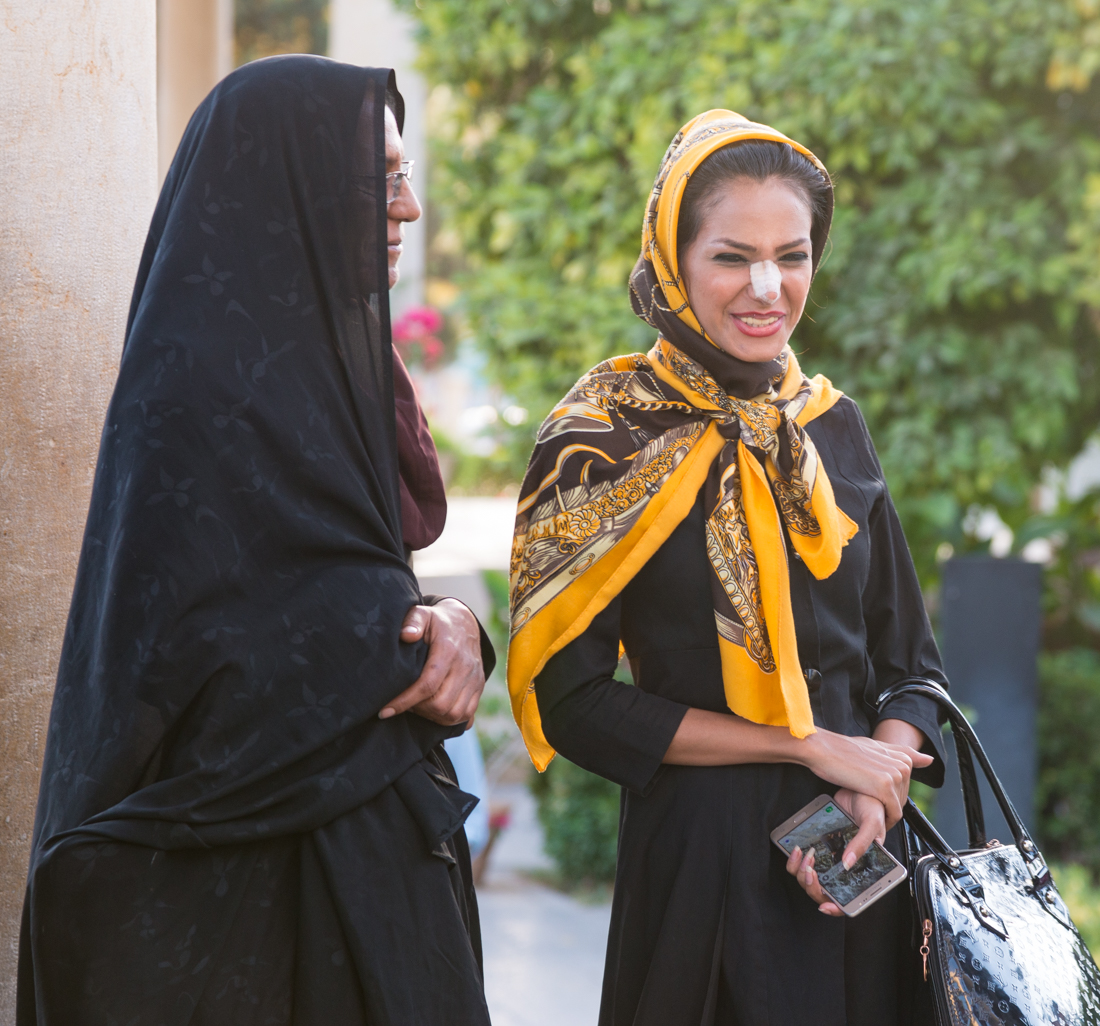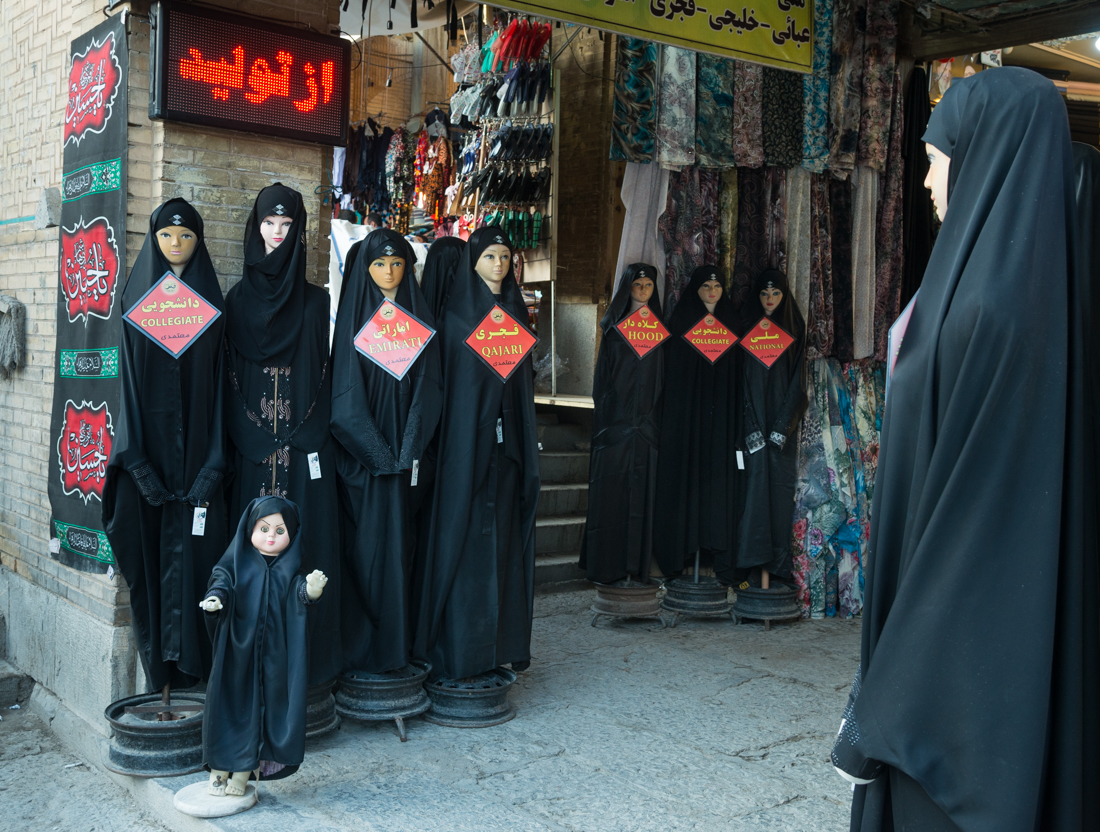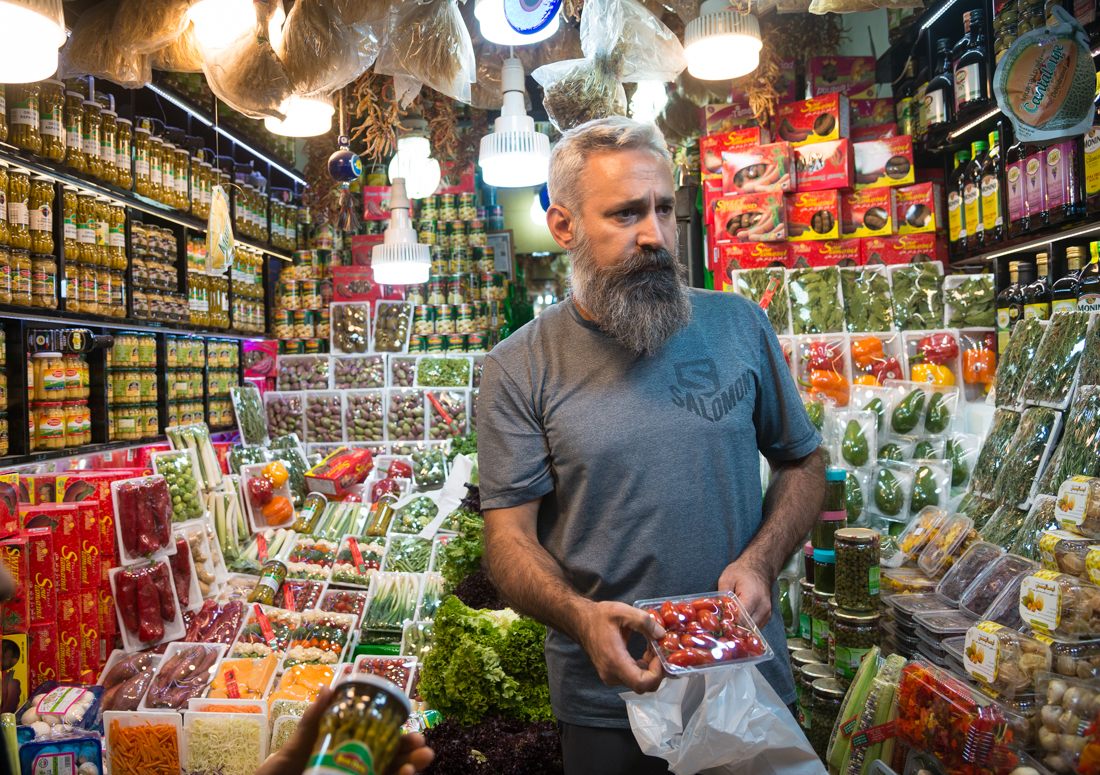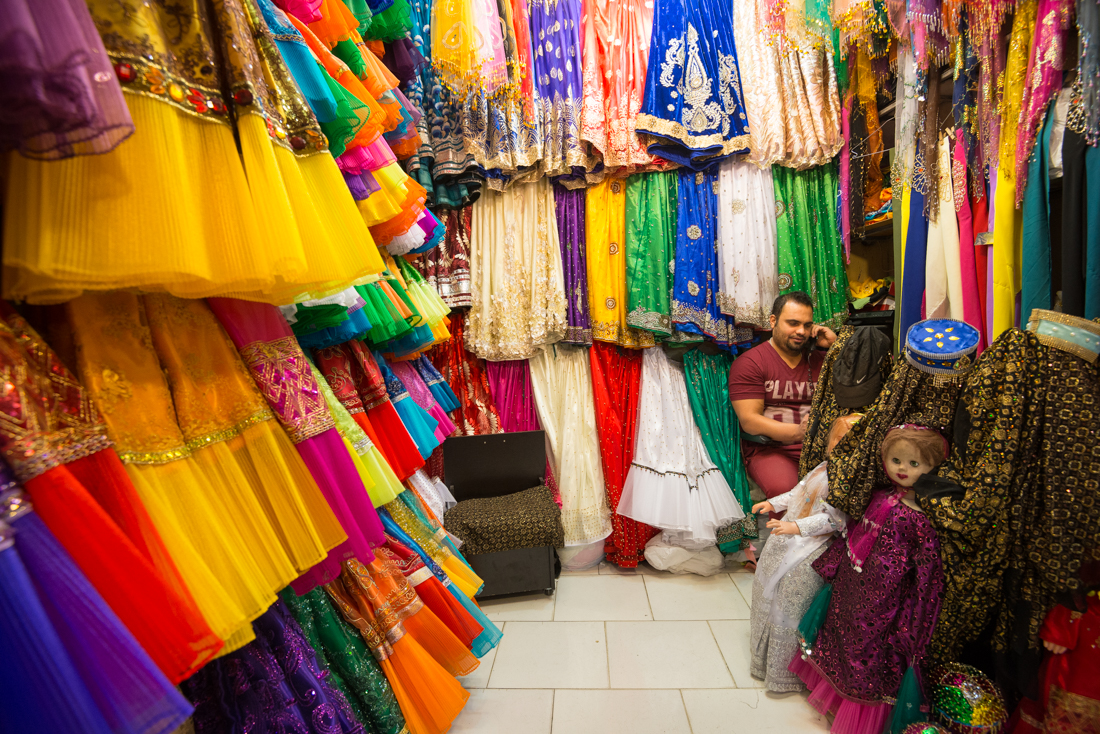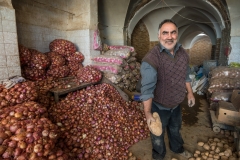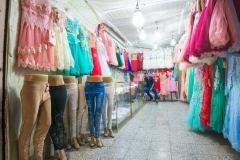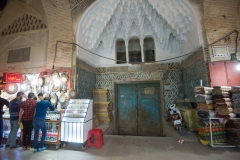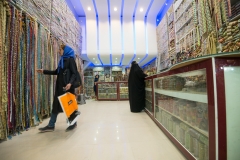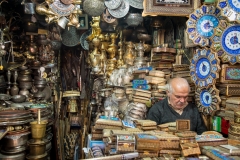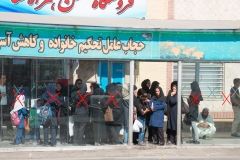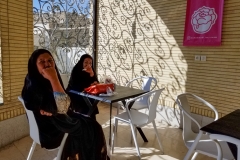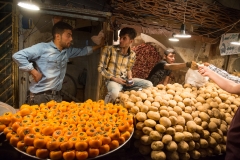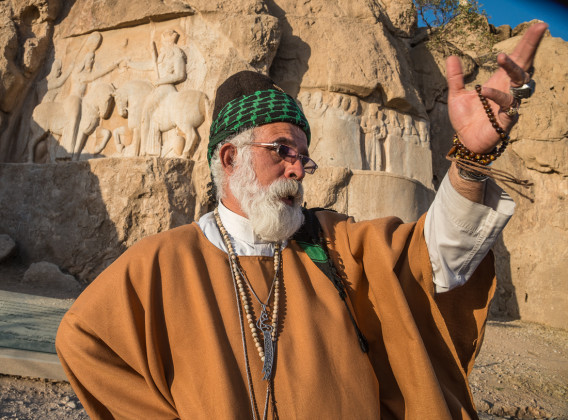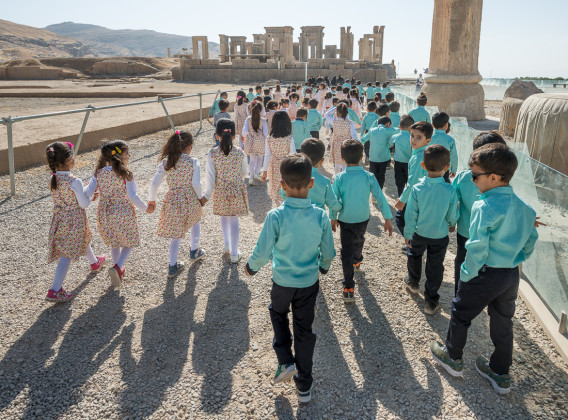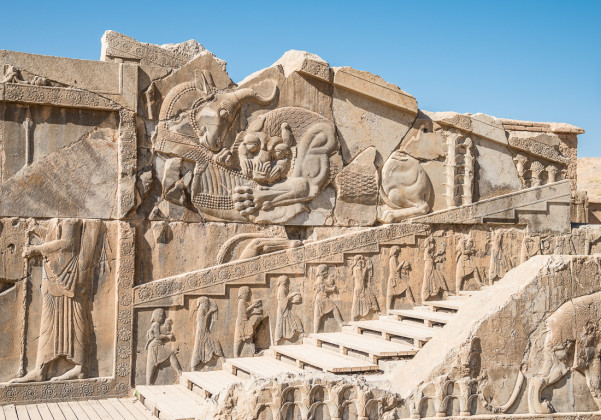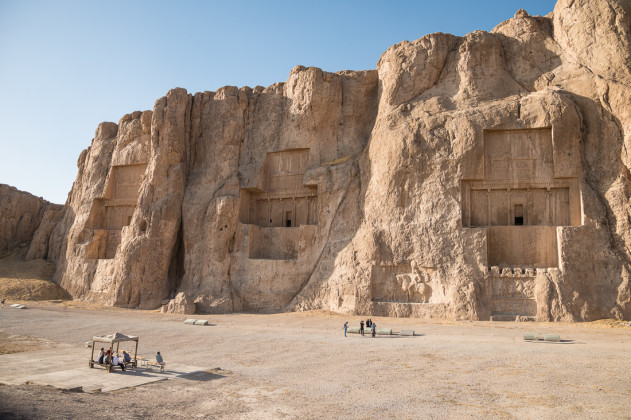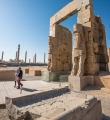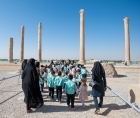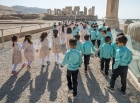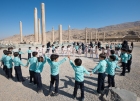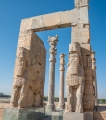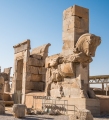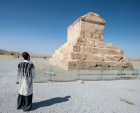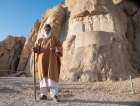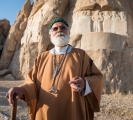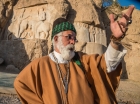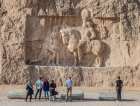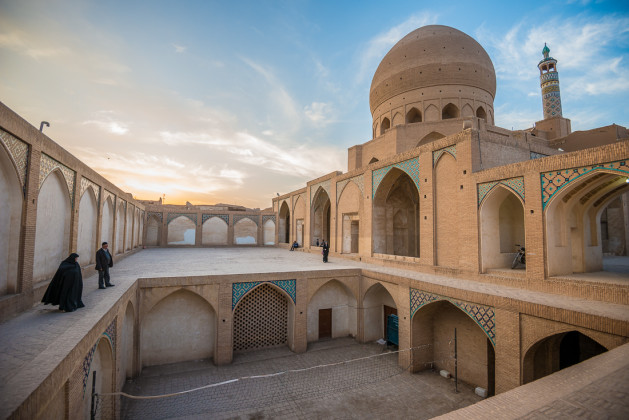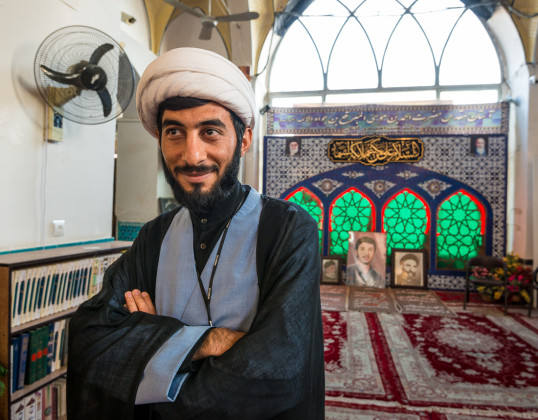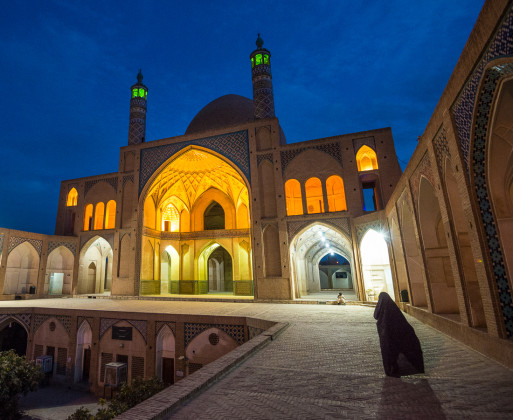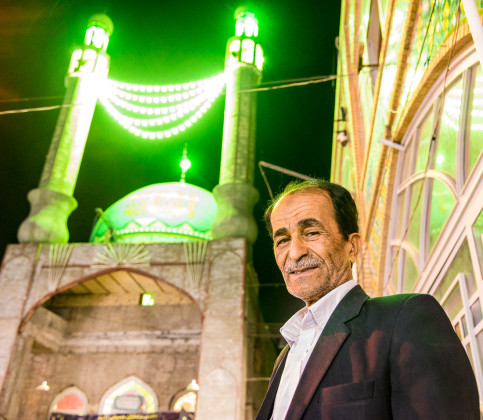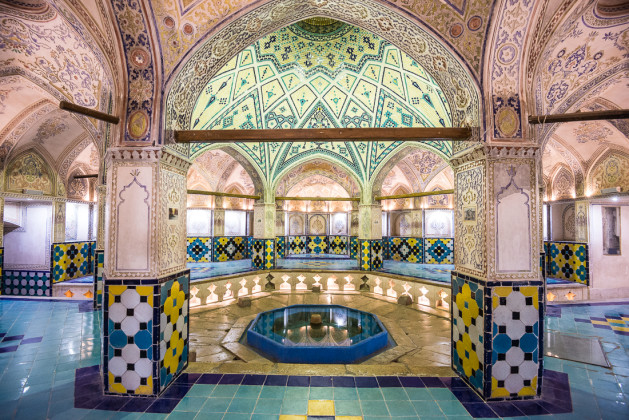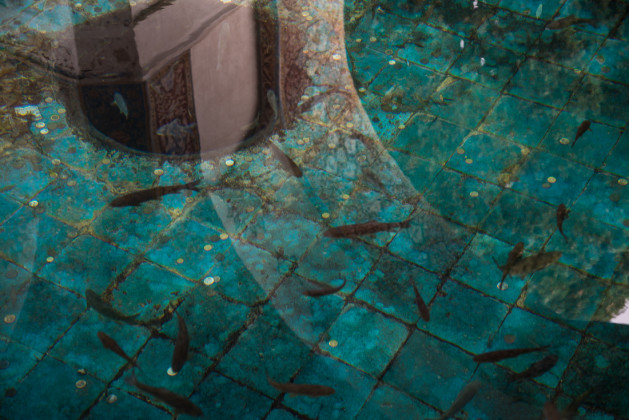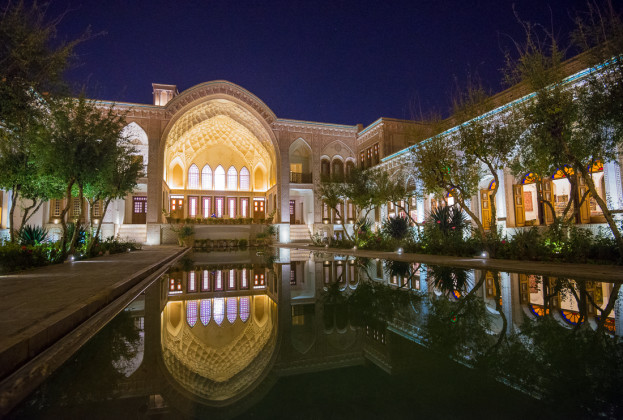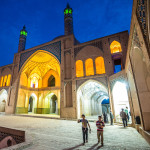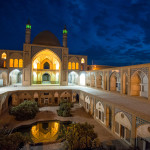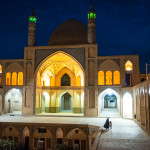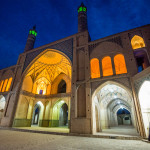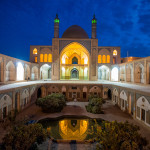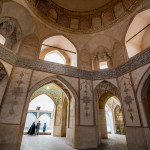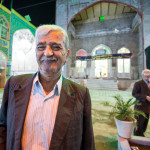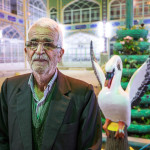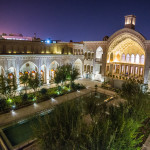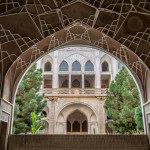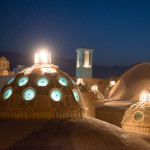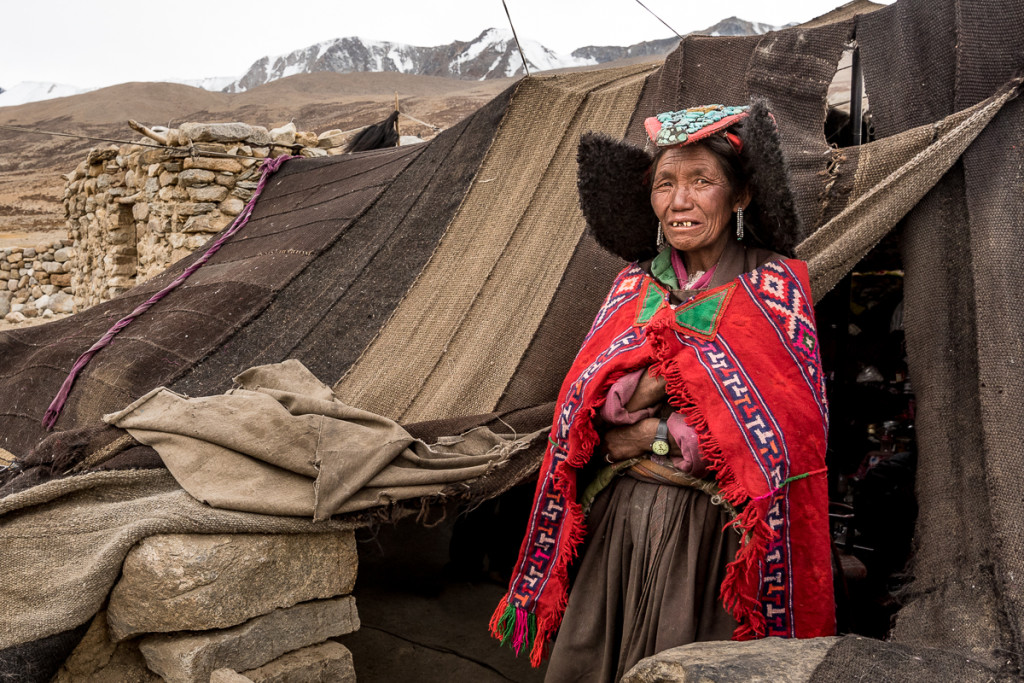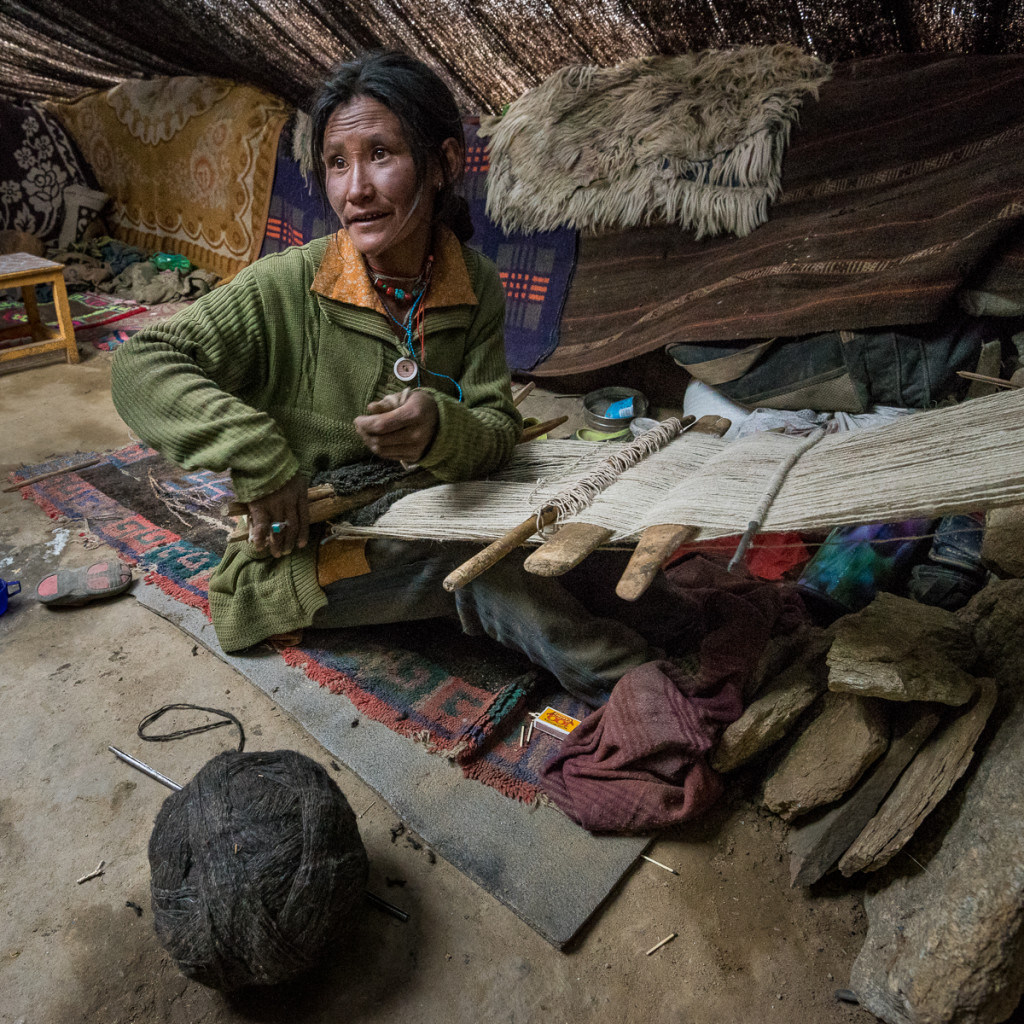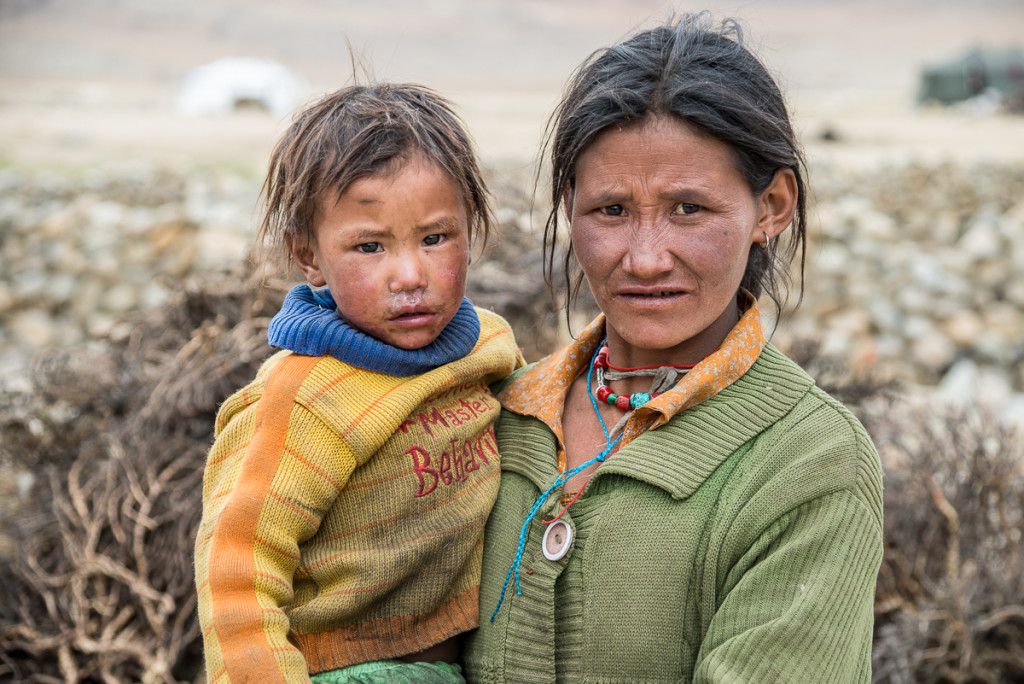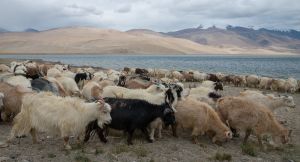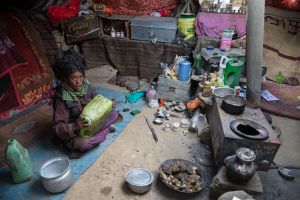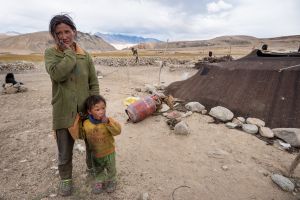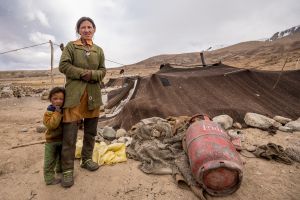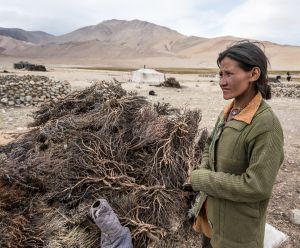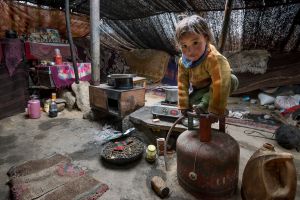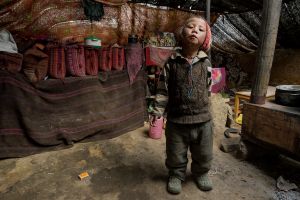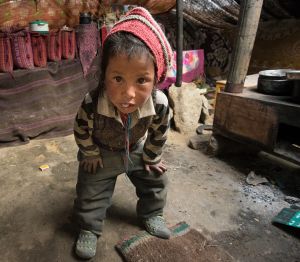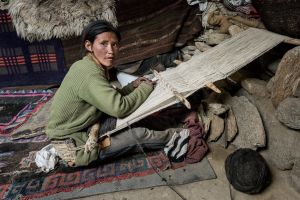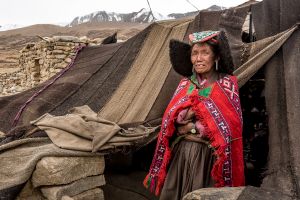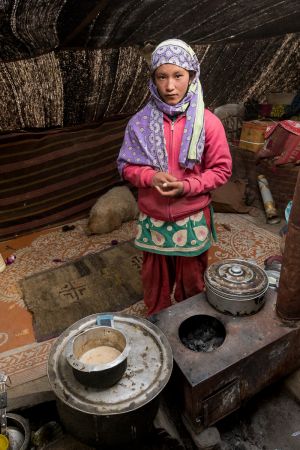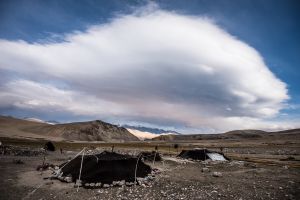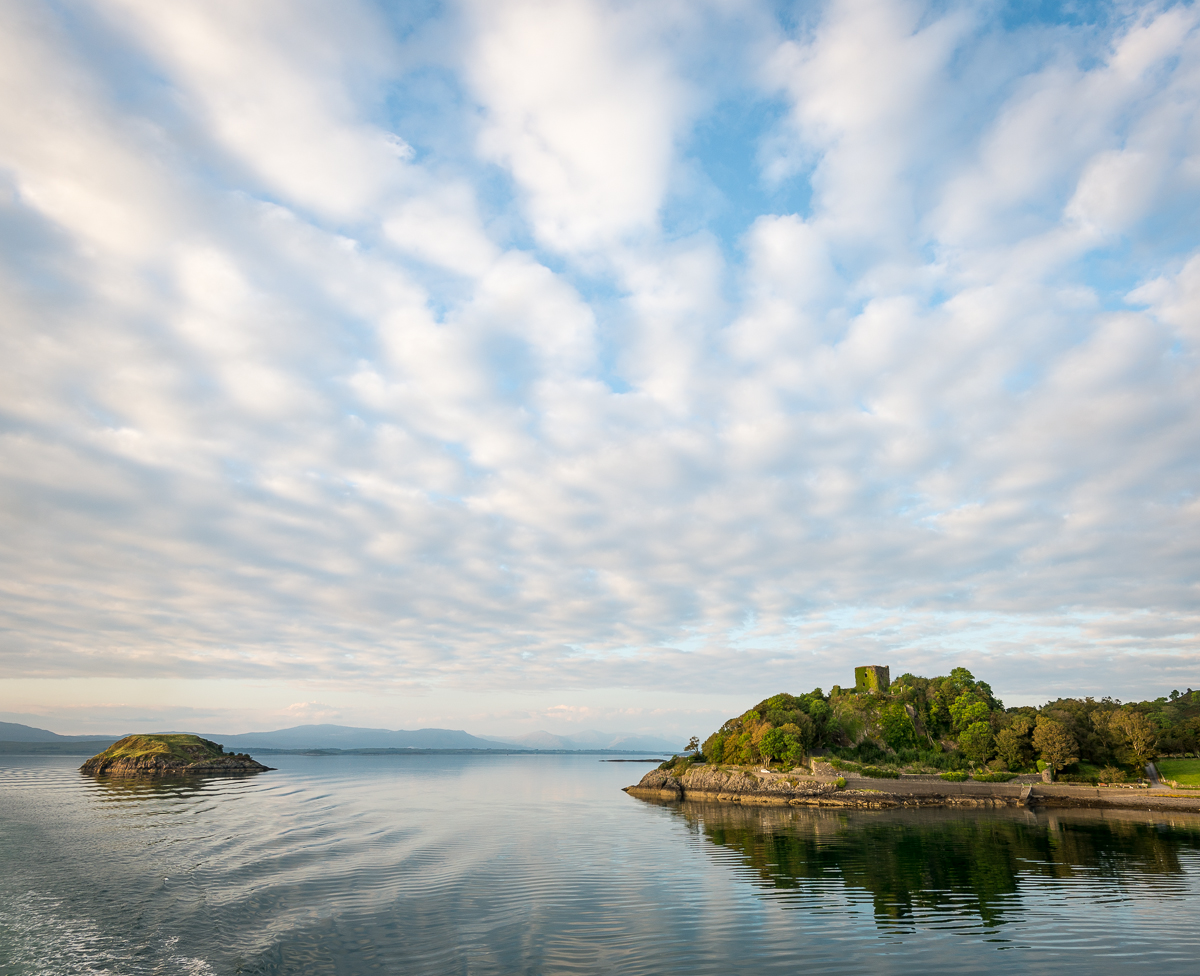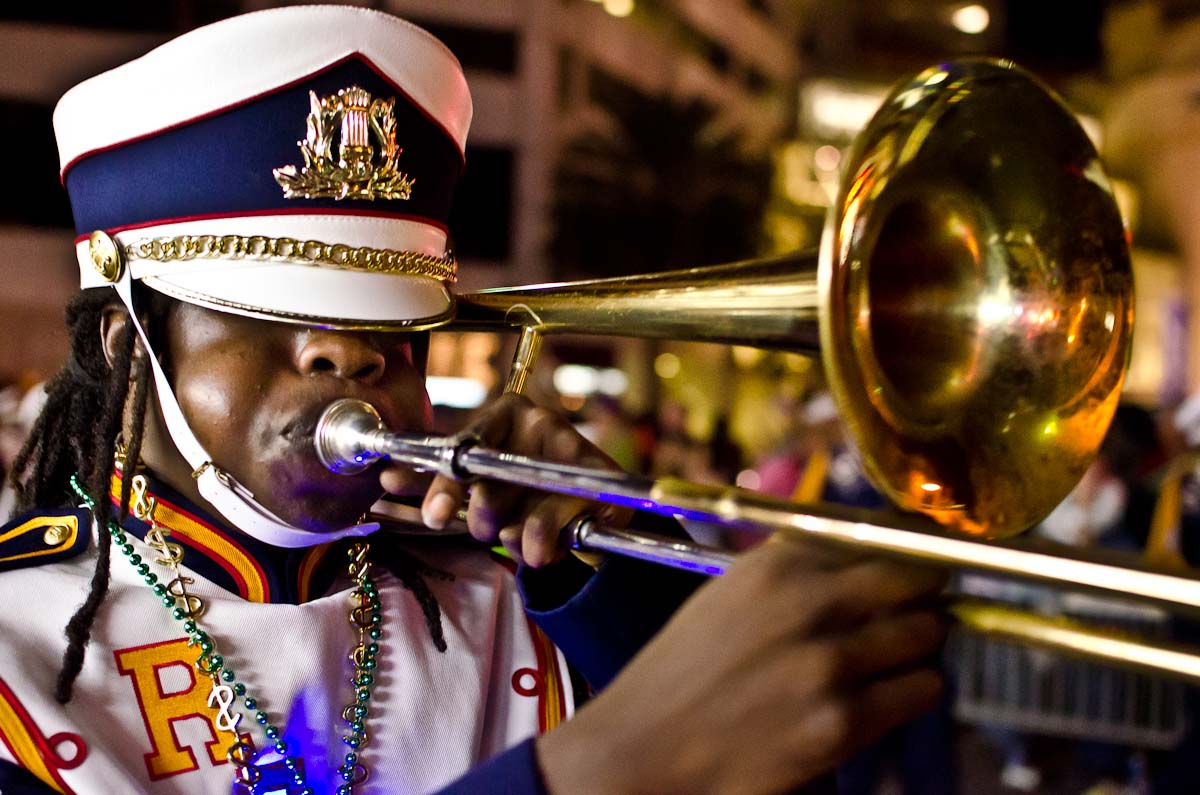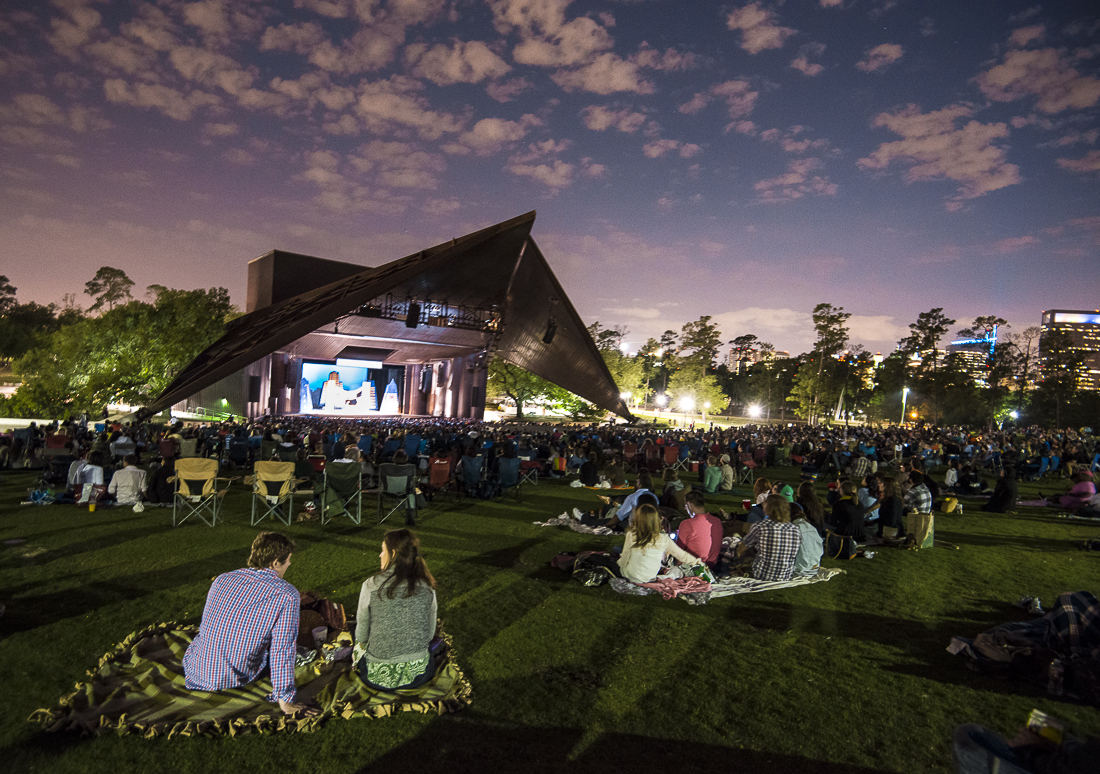In the time period roughly between Christopher Columbus and George Washington, early-day Iranians were on the other side of the world doing some pretty impressive things with blue and yellow tile. The city of Isfahan was the capital of Persia during the Safavid Dynasty in the early 16th to 18th Centuries. Today it still shows off some of Iran’s greatest architecture.
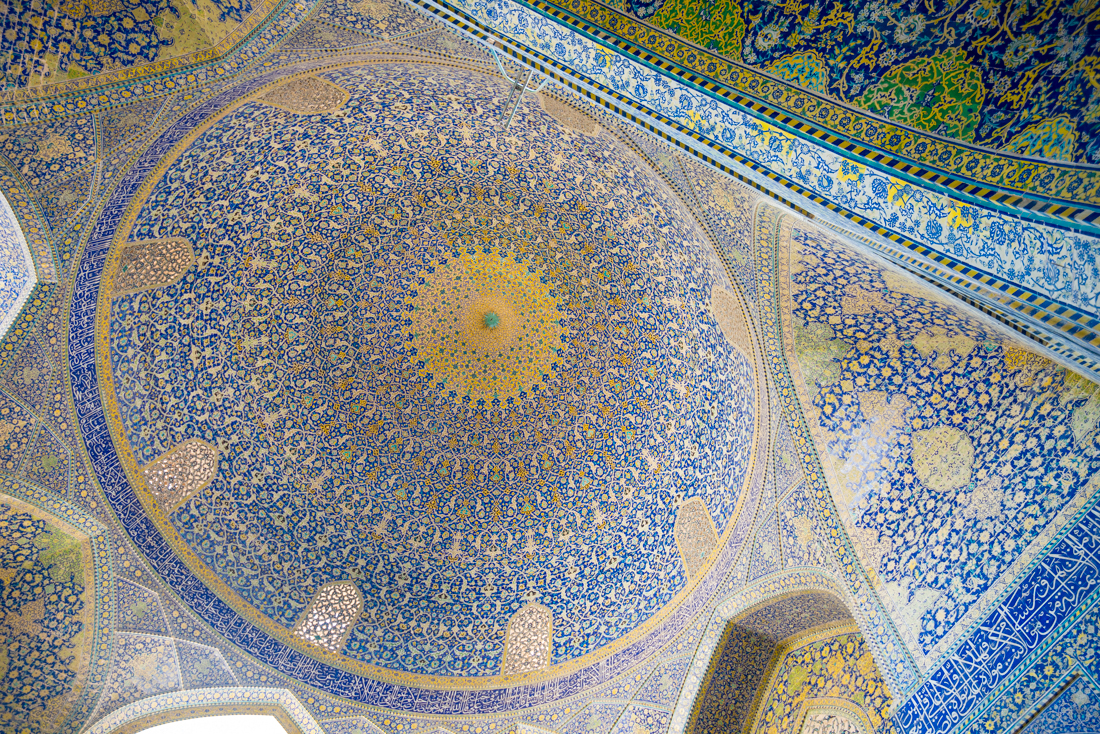
Domed ceilings of the Lotfallah Mosque (gold, below) and Shah Mosque (blue, above). The Shah Mosque’s blue dome is 150 feet high.
Four hundred years ago, the Lotfallah Mosque was reserved exclusively for the ladies of Shah Abbas’ harem. But today even gawking Americans can go inside and get some pictures of its amazing golden dome. Lotfallah anchors the east side of Naqsh-e Jahan Square (aka Imam Square) in Isfahan — the second largest public square in the world (behind Tienamen in China). Just as it did back then, the square also has a king’s palace on its west side, a grand public mosque on the south end, and the city’s Grand Bazaar to the north, though the 17th Century polo field has been replaced by sidewalks and fountains. The whole place is a UNESCO World Heritage site, and rightly so. The big Shah Mosque is all blue, and it’s arguably the most impressive piece of architecture in existence from that era.
Isfahan has a population of about 1.5 million. In the 16th and 17th Centuries, it was the capital of Persia and headquarters of the Safavid Dynasty. It’s been a center for rug making and trading and other elaborate artisans ever since. I bought a couple of smallish rugs myself and hauled them back to America.
As you’ve probably noticed, a huge portion of the decorative tile in Iran is blue. “Why all the blue?” I asked. I got three different answers, and I assume each one is partly true. #1: Because minerals were available in the area’s mines (cobalt and arsenic, for example) that were great pigments for making lovely blue and yellow ceramic tile. #2: Because blue is the color of heaven (Apparently they know this somehow). #3: Because water is blue, and when you live in the desert water is a very big obsession.
In that vein, there were a couple of famous bridges in town I was looking forward to seeing. But it turns out that late October is part of the dry season in the deserts of Iran. The river had not a single drop of water, so the bridges looked a little odd. Too bad they didn’t cover them with blue tiles.
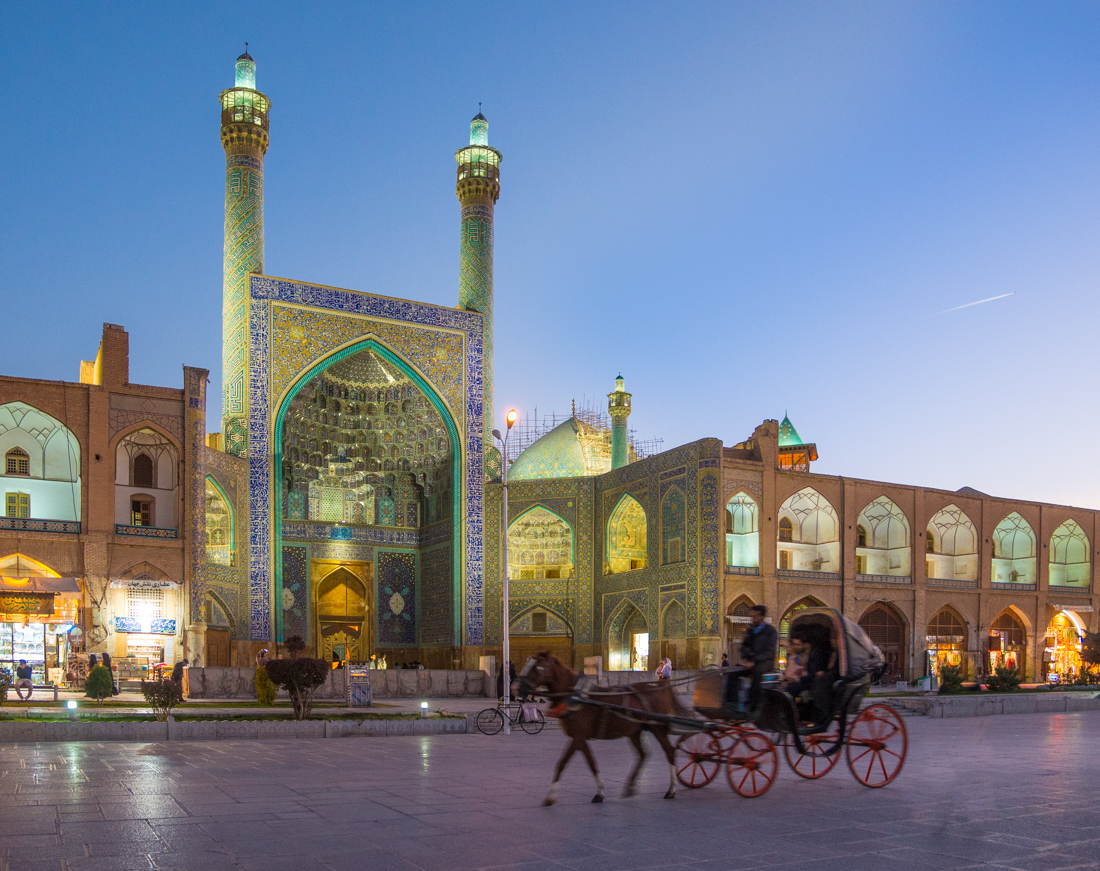
You can take a carriage ride around Naqsh-e Jahan Square. (And no, that’s not a normal mode of transport in Iran; they seem to mostly just drive small white cars.)
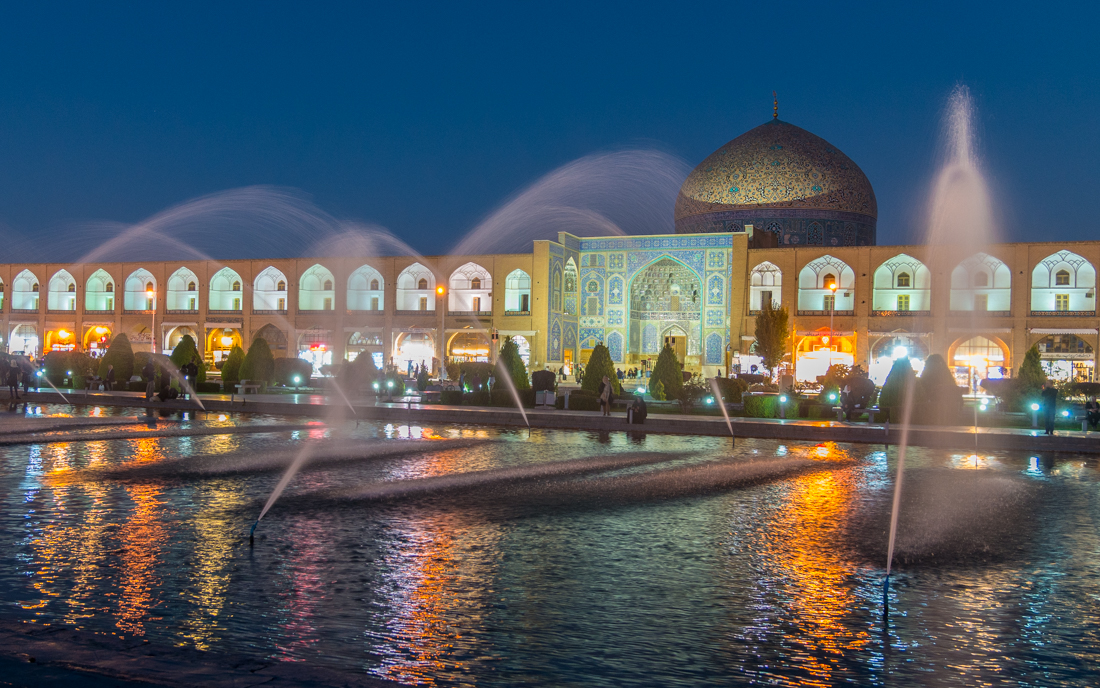
Lotfallah Mosque at night. It’s unusual because it has no minarets for a “call to prayer.” They weren’t needed because the mosque was private — reserved for the Shah’s family and harem, apparently.
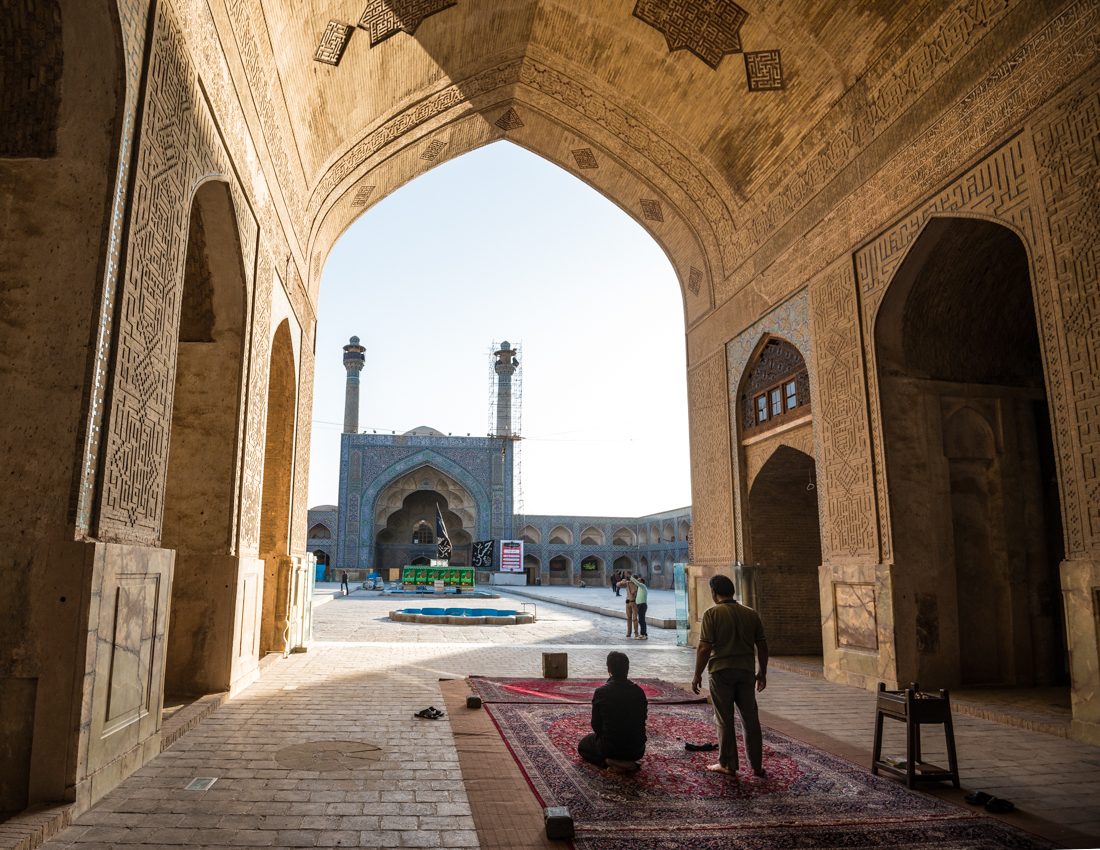
The Jameh Mosque of Isfahan, mostly hidden in the Grand Bazaar and overshadowed by the fancier mosques on the Square. Jameh was built in bits and pieces over the course of 1200 years.
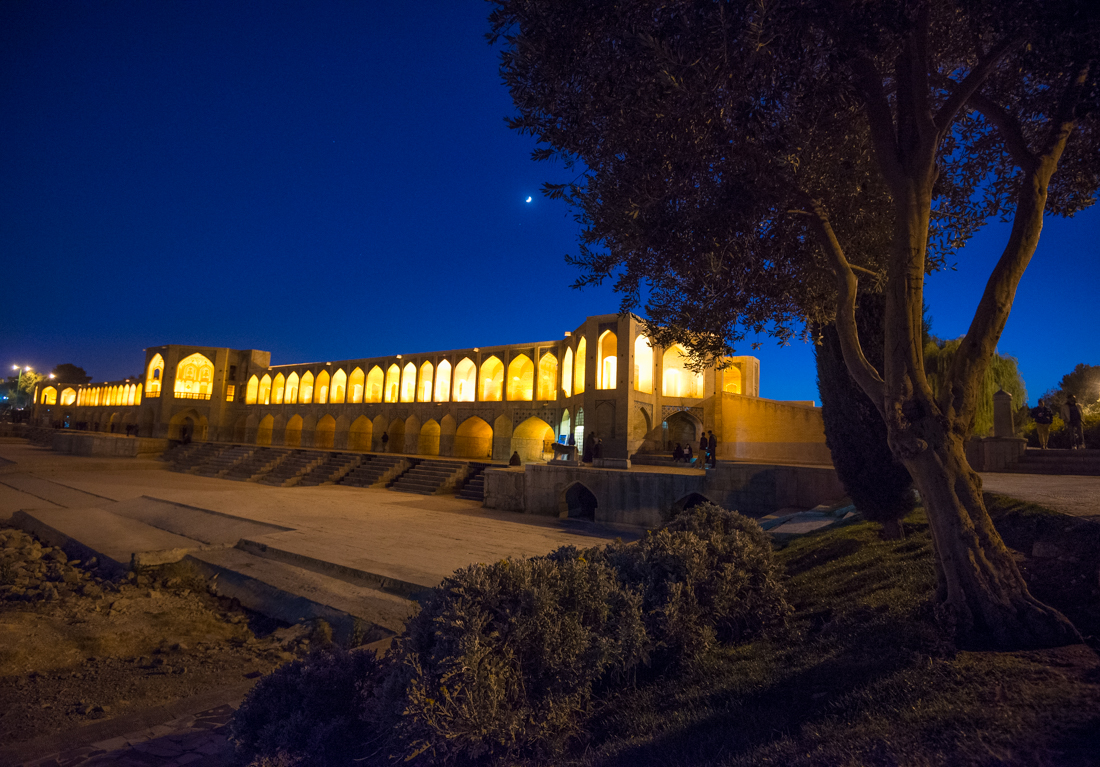
Allahverdi Khan Bridge (aka the Bridge of 33 Spans) was built in 1600. At other times of year, water flows through all those spans — which would surely make for a better picture! The bridges are a popular hangout for old and young. One group of young ladies insisted I join them for tea before I could take their pictures. I wasn’t sure if the old guy below was responsible for that geometric figuring on the column he was leaning against. But I doubt it.
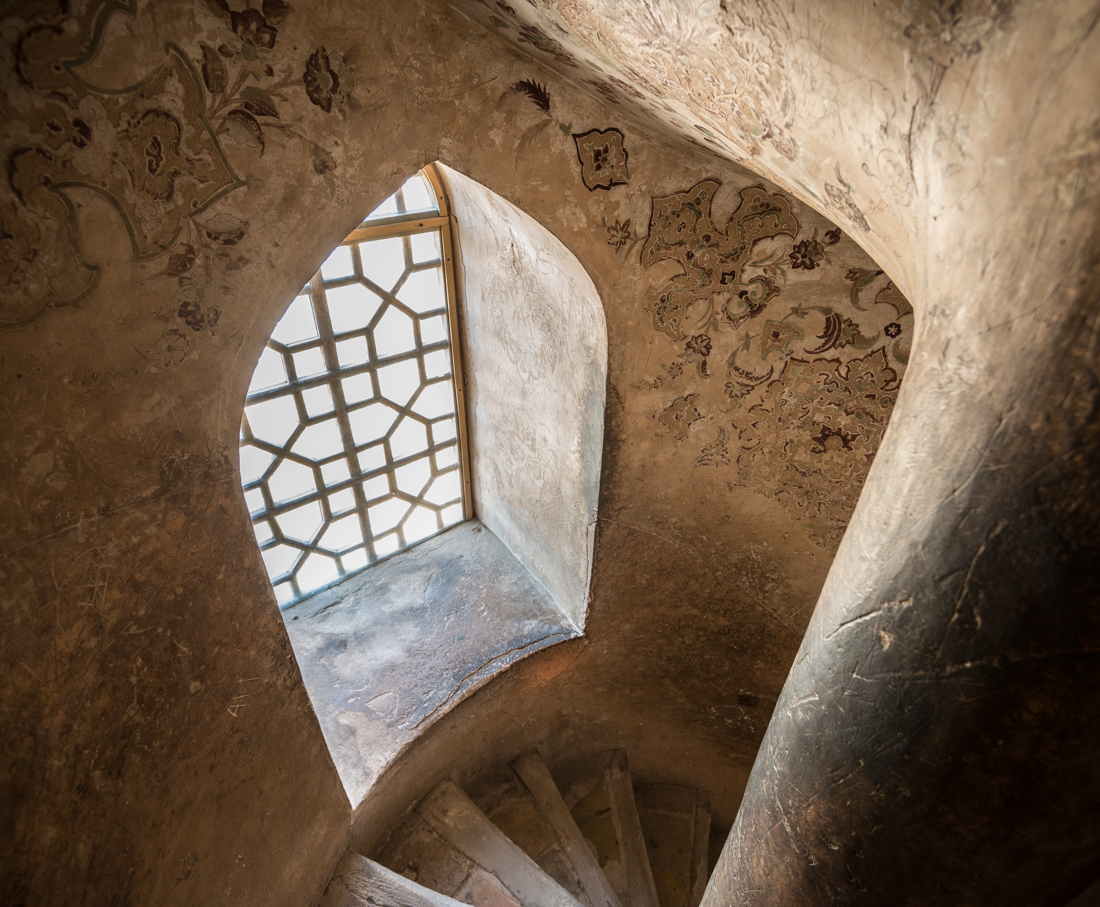
Spiral stairway in the Ali Qapu Palace on the big square in Isfahan. Shahs and Sultans have been climbing these stairs (often for a better view of the polo games below) since the late 1500s.
